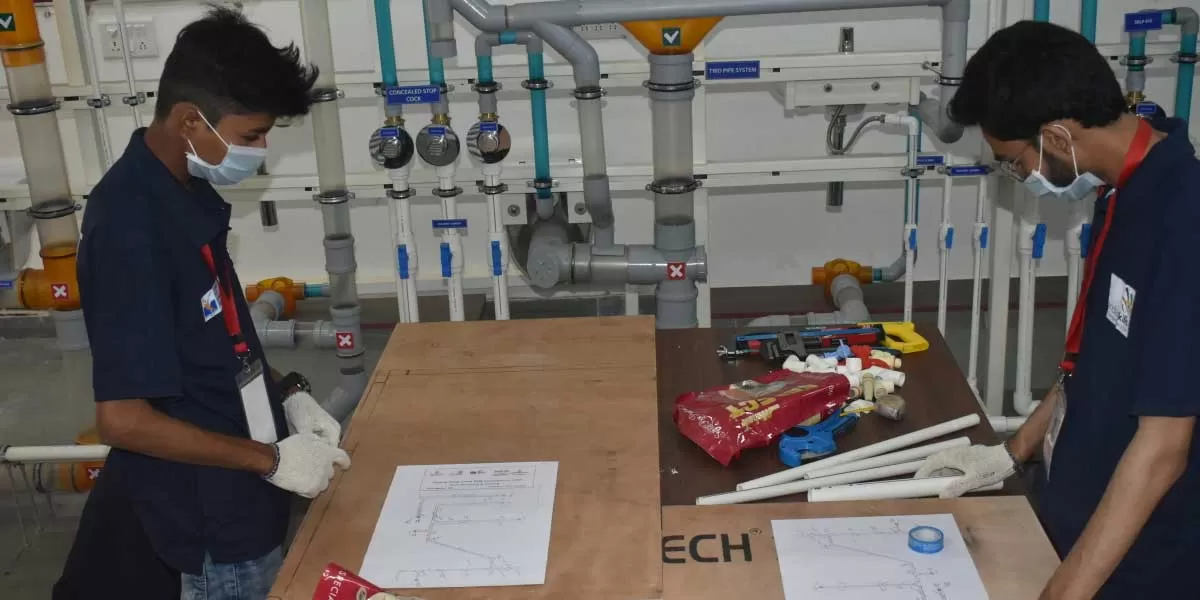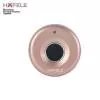In the midst of the lockdown and in the backdrop of a brewing controversy about foreign goods in the Indian market, there was a social media post that went viral proclaiming a list of wholly Indian cement companies. One leading manufacturer even released an advertisement declaring its wholly Indian identity. This was even before we heard the slogan exhorting countrymen to “go vocal for local”. Behind this social media trivia was an innocent ploy to enhance image, to differentiate from competitors and to reinforce loyalties among customers, possibly an outcome of a marketing and brand manager at work. Brand managers have been busy in India’s cement industry for a few decades now - discovering and devising new innovative ways to forge new stronger relationships with customers that promise a reward of customer preference with higher margins.
Commodities and Brands
Along with sand, cement has played a significant part in the marketer’s laboratory, seeking to shun the pejorative tag of being a mere commodity to be transformed into a brand. A commodity is a raw material or basic resource that is either cultivated, extracted or mass-produced for use in the production of some other products. Implicit in this definition is that commodities from different sources are unspecialized with little or no means of being distinguished from others. The American Marketing Association defines a brand as “a name, term, symbol, or design, or a combination of them intended to identify the goods or services of one seller, and to differentiate them from those of the competitors.” Basically a brand is simply the means of identifying a product or service so as to distinguish it from its competitors. Brands are the antithesis of commodities, by building an emotional connection with customers beyond considerations of mere pricing and availability.
The First Brands
Going strictly by these definitions it would not be incorrect to state that branding in India’s cement industry goes back to the days of its very beginning in the early years of the last century. The country’s oldest cement plant was established circa 1908 in the village Lakheri in the state of Bundi (now a district in Rajasthan). The Lakheri plant is credited with introducing the first branded cement in India. Named BBB Cement or ‘Bundi Bagh Brand’ cement, it was among the most popular brands in its time and remained in the memory of its customers decades after it was phased out.
By the mid 1930’s there was a panoply of cement companies in India with imaginative brand names evocative of regional culture, flora and fauna – names as diverse as Nilgiris, Charminar, Five Rivers, Anchor, Flag, Sun, Star of India and Swastika. In 1936 all of them except one merged to form part of The Associated Cement Companies Limited or ACC as we know it today. This also came about with a national swadeshi flavour. Swastika with the highest sales in the group was adopted as the company’s brand name but after World War II began, it was withdrawn and the name ACC came to be the company’s main brand. The sole company that remained independent from the merger was the forebear of today’s Dalmia Cement.
Building India
As the years rolled by, independent India leaned on the cement industry to shoulder its massive development agenda. Thus were built the “temples” of new India. The industry grew in number and in production capacity. Many new manufacturers were added, new groups, new companies with new brand names. During this period the industry came under total control of government and remained so for the next four decades right up to 1982 which saw partial decontrol and 1989 when total control was lifted. The control regime saw little scope for marketing and cement continued to comprise largely undifferentiated products. But this did not deter companies from creating strong corporate identities for themselves. Older companies could realize the immense value in differentiation in their relationships with varied groups – customers, channels and distribution partners, employees, communities and others. These were building blocks of a kind for corporate branding. Also noticeable were the efforts to create strong and proud associations with large projects and with regions. Thus engineering marvels like mighty dams at Bhakra and Hirakud, the formidable Pamban railway bridge, the Bridge over the Ganga, early roads like the iconic Marine Drive, national highways like Bombay Poona, giant edifices and stadia in New Delhi and state capitals, all became emblematic of different cement brands and their companies, often conjured into taglines.The Industry as a BrandThe cement industry is an archetypical example of a brick-and-mortar business, a mould from which it has long sought to unshackle itself but probably never will. After all, brick-and-mortar businesses are built with this fundamental building material, especially here in this country. Over the years India’s cement industry has come to occupy its own unique position in the world. After China it is the world’s second largest and quite likely to retain that slot without challenge. It is also among the most modern, using advanced technology to make a wide range of products that meet high quality standards. Yet the plants operate in diverse regions battling a host of constraints. The industry is among the world’s most energy efficient, environment friendly and with the lowest carbon footprint. In a sense the Indian cement industry has emerged as an entity that could seek to qualify as a Brand in itself, one with elements of Geographical Indication as well.
Brands Speak More
Following decontrol, the industry grew phenomenally, became increasingly fragmented and intensely competitive. More than before, price by itself did not suffice as an adequate differentiator. Marketing cement needed a different approach. Companies in the industry went beyond fiddling with identity tags and mnemonics to embark on designing layered parameters of building winning brands that stood out in the marketplace using all variables of the marketing mix. Brands now started to look differently in all aspects of the journey from the factory to the consumer. Also from thence through the next two decades, cement brands began to speak more, speak volubly and speak differently to its constituencies. The style and language became varied and wide. This was when along with print media and radio, television also expanded with more autonomy and in wider reach.
This was the time when it became clear to companies that critical success in selling cement gainfully required a value proposition to the customer made up of a good functional product, clever pricing well-devised channel management policies and well-planned distribution logistics. The role of customer service assumed heightened importance. The customer became king.
Cement brands started assuming multi-layered personalities, progressing from product and packaging features to take on intangible values and traits. Brand promotions and literature multiplied as did advertising. The language used to describe cement had meaningful words and ideas that you would find in the great epics like Mahabharata or Homer’s Odyssey. The messages were often made up of powerful characteristics such as strength, power, endurance, vanquishing and victory over adversities. Others deployed emotions linked to longevity, generations of relationships, young and growing families while strong traits invoked trust, enduring bonds and confidence. Product qualities were reinforced such as compressive strength, all-weather properties and corrosion-resistance besides touting technological prowess, engineering knowledge and skills. Regional flavours were enhanced in vernacular languages identifying very strongly with regional markets. And then came reference to serving customers, communities and other stakeholders. Regionalism grew from local team spirit to extolling patriotism and nationalism.
Branding in the 21st Century
As the industry entered the 21st century, the nature of cement marketing and brand management has perhaps shifted dramatically from dissipative competition to one that is more heedful yet building and nurturing enduring relationships with all stakeholders in the company’s value chain. The success of many brands was evidence that there were segments of customers willing to pay more for their preferred choices. Companies began to appreciate the enormous returns from investing in brand building activities including brand research and equity studies leading to strategic planning. This was seen to reduce a brand’s vulnerability to seasonal and other uncertainties and dependence on its channel partners. In these last two decades many companies in the industry have been investing considerable funds in an effort to adopt a more scientific and methodical approach to unravel the enigmatic customer so as to clearly identify specific target segments and seek ways to attract and hold their attention, to build enduring relationships with them, to communicate value and utility to them, not just to customers but to their influencers and to other stakeholders. Brands today embrace more aspects of a company’s activities. They speak not just of eco-friendliness but more holistically of the company’s scorecard on sustainable development and sustainable construction.
Brand research and equity studies by reputed agencies have shown that several Indian cement brands outrank their global peers in terms of brand equity, often placing them on par with brands of white goods and even some in the FMCG sector. That’s a long journey for a product that set off as a commodity and is still considered as one by many. Of course this high brand equity may be attributed in large part to the way cement is sold and purchased in this country with a predominant share still sold through trade channels to end customers. In contrast cement in the more developed economies is largely sold as B2B. The shift is happening in India’s bigger cities but gradually. Meanwhile advertisements for cement brands will continue to chase the world of cricket in a bid to target that valuable cement buyer.
However post Lockdown a challenge before the industry will be to assess its impact if any on brand preferences. New forces may well come to influence customer purchase behaviour. In respect of several products in regular use, it is evident that their availability and price considerations have come to supercede brand loyalty. That almost suggests regressing to square one - from a brand back to a commodity ! Brands will necessarily have to demonstrate, revalidate and reassure their loyal customers that they continue to care, that the customer remains King.R Nand KumarRnandkumar@gmail.com(The author is a marketing and communications professional with experience in the cement industry and as guest faculty in the subjects of marketing, corporate communications, sustainability and corporate governance.)























